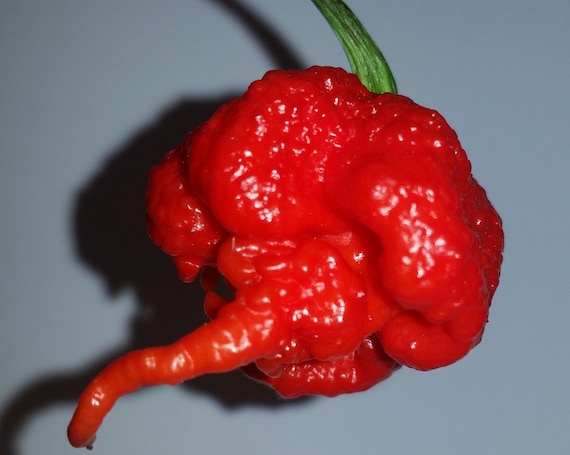


Naga Morich means “serpent chili” in Bengali. The strain is protected by the US government’s Plant Variety Protection Act, ensuring its spice for many generations to come. He kept it, bred it, and started selling it as its own product. It was discovered by accident when a farmer trying to grow domestic habaneros found a bright red pepper different from the orange habaneros in his field. As a close relative of all the habanero peppers, the Red Savina shares the well-established Central American origin story but was developed further in California. Yet another habanero cultivar, this bad boy’s been selectively bred for generations to produce larger, heavier, and spicier fruit - to give you some idea of where this list is headed, the Red Savina was the hottest pepper in the world from 1994 to 2006, and we’re not even halfway through.

More creative uses of the pepper include a guest appearance in “Caribbean Red Pepper Surprise” ice cream, though, according to one consumer, “The surprise is, your brain is on fire, and your taste-buds are in love, but your fillings have melted.” Like many of the other contenders on this list, the Caribbean Red likely hails from the Amazon basin (though some argue for Yucatan origins) and is a staple in Mexican cooking, where it can be commonly found in salsas and hot sauces. Caribbean Red Habanero (300,000-475,000 SHU)Īn upgraded version of the habanero, clocking in at almost twice the spice, this adorably small pepper approaches sinister levels of heat. Chocolate habaneros have been dubbed the “ultimate salsa pepper,” though you’re more likely to find them in world-famous Jamaican jerk sauce.

The name comes from the color of the pepper, not the flavor. What you won’t taste is any hint of chocolate. This one’s a favorite of many ‘chiliheads,’ who somehow remain conscious long enough to detect a rich, smoky flavor buried somewhere under all that heat. Because its past is a mystery, however, there are no real ‘traditional’ uses for the Devil’s Tongue - experts recommend eating them fresh in salsas or salads if you can take the heat.Ĭhocolate Habaneros originated in Trinidad and in fact have absolutely nothing to do with the Congo. Nobody’s quite sure where it originated or how it came to be growing in the field of an Amish farmer, but it’s become renowned for its bright, fruity, and sometimes slightly nutty taste. Similar in appearance to the Fatalii, and a member of the habanero family, the Devil’s Tongue was first discovered growing in Pennsylvania among its habanero relatives. Just beware when confronted with this pepper as the heat starts early, covers your whole mouth, and takes quite a while to dissipate. Brave souls claim that its flavor is notably citrusy (though how anybody can taste anything through that much burning is beyond me), and so it’s used largely in fruity hot sauces from its native Africa through the Caribbean. The first pepper on the list from the Eastern Hemisphere, the Fatalii is a chili from central and southern Africa. In ascending order, here’s how the hottest peppers in the world rank from the naturally occurring to the unnatural Frankensteins humans have created. When the Scoville Scale was created by Wilbur Scoville in 1912, he never could have imagined the human-engineered peppers that can be hundreds of times hotter than anything that occurs in nature.
GHOST PEPPER VS CAROLINA REAPER PLUS
Which, for the sake of tester’s mouths, is a huge plus in today’s world of super peppers. While the test used to be more subjective and based on testers’ tastes, high-performance liquid chromatography has made it possible to measure the exact amount of capsaicin in the pepper possible. For example, a cup of jalapeño takes between 2,500 and 8,000 cups of sugar water to neutralize the spice, so it’s 2,500 to 8,000 SHU. The SHU range from zero up to the millions, each one representing how many cups of sugar water it would take to dilute a cup of the food to a neutral spiciness level. Items on the scale are ranked by their Scoville Heat Units (SHU), which measure the concentration of capsaicin (the active compound responsible for spice). The Scoville Scale is an objective scale used for measuring the spicy heat of peppers and other hot foods.


 0 kommentar(er)
0 kommentar(er)
